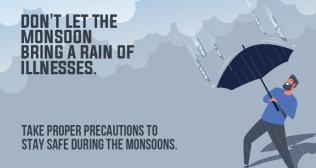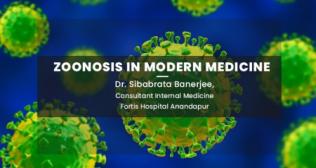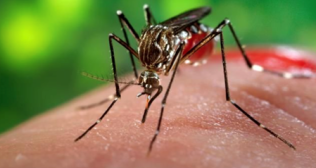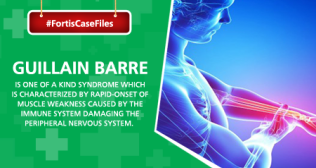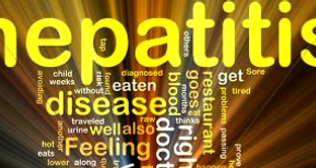
What is Hyperthermia: How Excessive Heat Affects the Body
Our bodies are remarkable machines, equipped with a sophisticated internal thermostat that works tirelessly to maintain a stable core temperature. Through processes like sweating and regulating blood flow, we can cool ourselves down when the environment heats up. However, this natural cooling system has its limits. When we are exposed to extreme heat for too long, our bodies can absorb more heat than they can release, leading to a dangerous and potentially life-threatening condition known as hyperthermia.
This condition is not the same as a fever, which is the body's controlled response to an infection. Hyperthermia is an uncontrolled rise in body temperature that can overwhelm the body's ability to cope. Understanding its causes, symptoms, and the critical steps for treatment is essential for staying safe during hot weather.
What Are the Main Causes of Hyperthermia?
The primary cause of hyperthermia is prolonged exposure to hot, humid environments without adequate relief or hydration. However, several specific factors can contribute to or accelerate this process. The main causes of hyperthermia fall into a few key categories.
Environmental Exposure
The most straightforward cause is simply being in an environment where the heat is too intense for the body to handle. This is particularly dangerous when high temperatures are combined with high humidity. Humidity prevents sweat from evaporating effectively from the skin, which is the body's primary cooling mechanism. This combination can quickly lead to a dangerous rise in body temperature.
Strenuous Physical Activity
Engaging in intense physical activity, especially in hot weather, generates a massive amount of internal body heat. This is known as exertional hyperthermia. Athletes, construction workers, and soldiers are at high risk. If the body cannot dissipate this heat quickly enough through sweating, the core temperature can rise to dangerous levels.
Other Contributing Factors
Several other factors can impair the body's ability to regulate temperature and increase the risk of hyperthermia:
- Dehydration: Not drinking enough fluids reduces the body's ability to produce sweat, short-circuiting its cooling system.
- Certain Medications: Drugs that affect sweating or blood flow, such as diuretics, antihistamines, and some psychiatric medications, can interfere with temperature regulation.
- Age: Infants, young children, and older adults (over 65) are more vulnerable because their ability to regulate body temperature is less efficient.
- Chronic Illnesses: Conditions like heart disease, lung disease, and diabetes can make a person more susceptible to the effects of heat.
The Stages and Hyperthermia Symptoms
Hyperthermia is not a single event but a progression of heat-related illnesses that can worsen if not treated promptly. Recognizing the early signs is critical.
Stage 1: Heat Stress and Heat Cramps
This is the mildest stage. The initial hyperthermia symptoms include muscle cramps (often in the legs and abdomen), heavy sweating, and fatigue. At this point, the body's core temperature is still relatively normal.
Stage 2: Heat Exhaustion
If the exposure to heat continues, the condition can progress to heat exhaustion. This is a more serious stage where the body begins to lose its ability to cope. Symptoms include:
- Heavy sweating
- Cool, pale, and clammy skin
- A fast, weak pulse
- Nausea or vomiting
- Dizziness and headache
- Fainting
At this stage, the core body temperature may be slightly elevated but is typically below 104°F (40°C).
Stage 3: Heatstroke
This is the most severe form of hyperthermia and is a life-threatening medical emergency. Heatstroke occurs when the body's temperature regulation system fails completely. The hyperthermia temperature at this stage rises rapidly to 104°F (40°C) or higher. The defining hyperthermia symptoms of heatstroke include:
- A very high body temperature.
- Hot, red, and dry skin (the person may stop sweating).
- A rapid, strong pulse.
- Confusion, disorientation, or agitation.
- Slurred speech.
- Seizures.
- Loss of consciousness or coma.
Without immediate emergency treatment, heatstroke can cause permanent disability or death.
Treatment and First Aid
The treatment for hyperthermia depends on its severity.
For Heat Exhaustion
If you suspect someone has heat exhaustion, take these steps immediately:
- Move them to a cooler, shaded, or air-conditioned location.
- Have them lie down and elevate their legs and feet slightly.
- Remove any tight or unnecessary clothing.
- Give them cool water or a sports drink to sip on.
- Cool their skin with a cool shower, sponge bath, or by applying cool, wet cloths.
If their symptoms worsen or do not improve within an hour, seek medical help.
For Heatstroke
Heatstroke requires immediate emergency medical intervention. Call for an ambulance right away. While waiting for help to arrive, begin first aid to cool the person down. Move them to a cooler environment and lower their body temperature using methods like a cool bath or wet clothes. Avoid giving them anything to drink.
Prevention Is Key
The best way to deal with hyperthermia is to prevent it from happening in the first place.
- Stay hydrated by drinking plenty of water, especially during hot weather.
- Avoid strenuous activity during the hottest parts of the day.
- Wear lightweight, loose-fitting, and light-colored clothing.
- Take frequent breaks in cool or shaded areas.
- Never leave anyone, especially children or pets, in a parked car.
Conclusion
Hyperthermia is a serious condition that results from the body's inability to cope with excessive heat. Recognizing the progression from mild heat stress to life-threatening heatstroke is crucial for knowing when and how to act.
By respecting the power of heat, staying hydrated, and taking sensible precautions, you can safely enjoy the warmer months. Listening to your body and knowing the warning signs are the most important tools you have to prevent a medical emergency.
Frequently Asked Questions
1. What is the main difference between a fever and hyperthermia?
Ans. A fever is a controlled increase in body temperature regulated by the brain in response to an infection. Hyperthermia is an uncontrolled, external rise in body temperature that overwhelms the body's cooling systems.
2. What is a dangerous hyperthermia temperature?
Ans. A core body temperature of 104°F (40°C) or higher is considered a sign of heatstroke and is a life-threatening medical emergency.
3. What are the main causes of hyperthermia in elderly people?
Ans. The elderly are more at risk because their bodies do not adjust to changes in temperature as quickly. They are also more likely to have chronic medical conditions or take medications that affect temperature regulation.
4. Can you get hyperthermia without being in the sun?
Ans. Yes. You can develop hyperthermia in any hot, poorly ventilated environment, even indoors, especially if you are engaging in strenuous activity.
5. How long does it take to recover from heat exhaustion?
Ans. With prompt treatment (moving to a cool place and rehydrating), most people recover from heat exhaustion within a few hours. It's important to rest for the remainder of the day.







